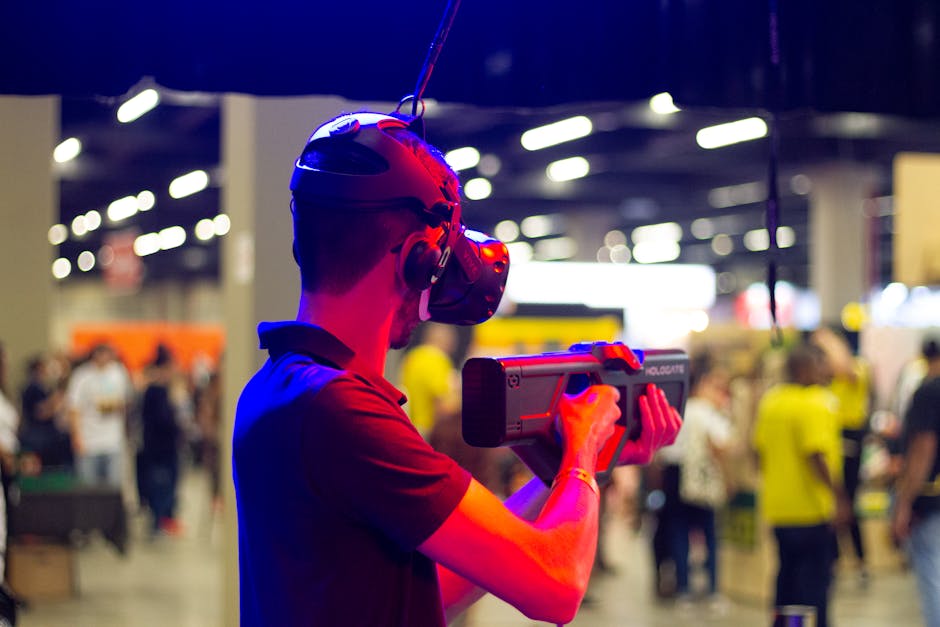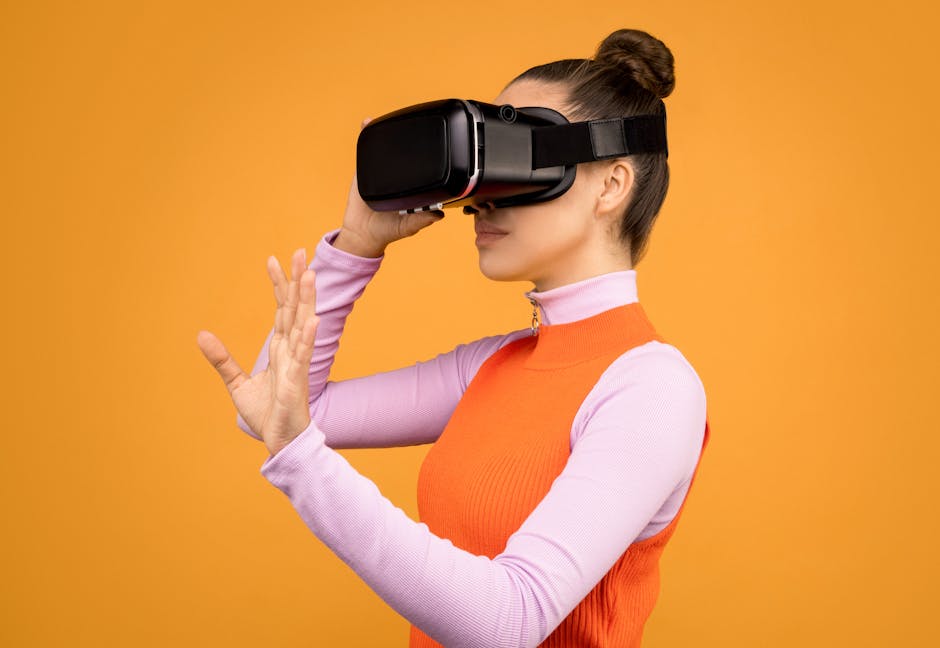Unlocking Sensory SEO: Engage the Senses for Search Success
Have you ever thought about the layers of experience that enhance our engagement with the digital world? Traditional SEO focuses primarily on keywords and backlinks, but in today's rapidly evolving landscape, it’s time to embrace the innovative concept of Sensory SEO—a holistic approach that engages multiple senses to create a more immersive and compelling search experience. By harnessing elements that touch not just the mind, but also the heart and senses, businesses can unlock a deeper connection with their audience. In this article, we’ll explore how tapping into the senses can redefine SEO and SEM strategies, enhance user engagement, and ultimately boost online visibility.
The Evolution of SEO: From Keywords to Sensory Engagement

In the early days of digital marketing, SEO was a straightforward game of keyword placement and content density. The goal was clear: rank higher on search engine results pages (SERPs) to drive traffic to your site. However, the landscape has changed dramatically. As technology evolves, users expect more than just text-based results; they seek immersive experiences that resonate with their emotions and senses.
According to a study by Harvard Business Review, emotionally engaged customers are more than three times as likely to recommend a brand and are far more loyal. This reflects a significant shift where brands that connect on an emotional level—not just through rational arguments—thrive. This is where Sensory SEO comes into play.
Imagine your audience not just reading your content but feeling, hearing, and even visualizing it in their minds. This multimedia approach can significantly amplify a user’s connection and influence their decision-making process. Not only does engaging the senses provide a richer experience, but it also aids in retention, making your brand memorable far beyond the search engine results.
Creating Memorable Experiences: The Five Senses in SEO

-
Sight: Visual content has always been a pivotal element in captivating users. With the rise of platforms such as Instagram and Pinterest, harnessing visually appealing graphics, videos, and even interactive graphics can keep users engaged. Integrating elements like infographics or dynamic visuals can lead to a longer dwell time on your site, positively impacting SEO metrics. For deeper insights into visual storytelling, check out our piece on harnessing VR for storytelling.
-
Sound: Consider the auditory environment you create around your content. Incorporating audio elements such as background sounds, podcasts, or voiceovers can create a more engaging user experience. Sonic branding has emerged as a potent strategy, influencing how users perceive brands. The audience remembers auditory stimuli longer than visual cues, so think about how sound can play a supportive role in your content strategy. More on this can be explored in our blog about the impact of sonic branding.
-
Touch: While digital interfaces primarily engage sight and sound, creating a tactile experience can also be beneficial. Brands are exploring haptic feedback technologies, notably within mobile apps and devices, making interactions feel more intuitive. For example, a user tapping through a seamless mobile experience can feel the difference between a basic interface and one that’s designed to resonate with their tactile senses.
-
Taste: Though unconventional in the realm of SEO, taste can be an essential factor for food and beverage brands. Using descriptive and vivid language that evokes flavors may help drive engagement. Consider how a well-crafted food blog not only describes recipes but immerses the reader in the experience, tantalizing their taste buds just by reading.
-
Smell: Like taste, smell is particularly potent within specific industries, especially in hospitality and food services. Implementing olfactory marketing, even through evocative language in your content, can enhance user engagement, triggering memories and emotions associated with particular scents.
The Role of Emotional Connection in Sensory SEO

Emotional connection plays a vital role in driving user engagement and loyalty. Consumers want experiences that resonate with them personally. Utilizing emotional language, storytelling, and relatable narratives can greatly influence the user experience. Research shows that consumers make decisions based on emotions, even when they believe they're being rational.
In this light, enhanced Emotional SEO leads to better connection points with audiences. It reflects not just in the way we structure our content but also in how we use design elements across platforms to speak to the emotional and sensory-driven aspects of user behavior. A study in Emotion Theory highlights the importance of emotional engagement—users are more likely to share positive experiences, thereby enhancing your site's footprint through organic shares and backlinks.
Here’s a practical example: consider a local bakery’s website that integrates sensory SEO effectively. They could use vibrant images of their fresh pastries, narrated video stories depicting the baking process, and even share behind-the-scenes audio of the bakery—engaging multiple senses and creating a connection that encourages sharing and returns.
Leveraging Technology for a Sensory SEO Experience

As technology advances, incorporating elements that support sensory SEO becomes more accessible. Here are a few technologies that marketers can utilize:
Virtual Reality (VR)

Virtual reality offers unprecedented opportunities to engage users. By creating immersive experiences that allow users to visualize products or services in action, brands can increase engagement rates significantly. This approach connects deeply with the audience, offering them a ‘real-life’ experience from the comfort of their home. For more innovative applications of VR in SEO, see our article on transforming user engagement with VR.
Augmented Reality (AR)

Much like VR, augmented reality allows businesses to overlay digital information onto real-world environments. For instance, furniture retailers have successfully implemented AR applications that let potential customers visualize how a couch would look in their living room. This kind of interaction not only boosts engagement but also drives conversions, enhancing both online visibility and user satisfaction. Dive deeper into AR’s power in marketing through our post on the fusion of AR and SEO.
Artificial Intelligence (AI)

AI technologies provide valuable insights into user behavior. Predictive analytics can help you tailor content to match users’ preferences and enhance sensory engagement. Imagine an AI tool that suggests styles or content based on users’ past interactions. This leads to a more personalized experience, driving engagement exponentially.
Why Empathy Matters in Sensory SEO

Empathy in digital marketing refers to understanding the emotional drivers behind consumer decisions. As marketers move towards a consumer-centric approach, leveraging digital empathy* becomes vital for crafting experiences that resonate with users on a deeper emotional level. Creating SEO content enriched with empathetic elements not only engages the audience but also builds trust.
Consider employing strategies like sentiment analysis to gauge audience reactions to your content. This additional layer of understanding can help refine not just your marketing strategies but the entire user experience. Our article on the impact of digital empathy on SEO offers excellent insights on this topic.
Strategies for Implementing Sensory SEO

To harness sensory SEO effectively, consider the following strategies:
-
Create Multi-Sensory Content: Every piece of content, be it a blog post, video, or social media update, should incorporate elements that touch on multiple senses. Whether through descriptive language or multimedia integration, keep sensory engagement in mind.
-
Optimize for Voice Search: As voice search grows, it’s essential to adapt content to accommodate users’ verbal queries. Emotional nuances in voice search can help connect better with audiences looking for authentic responses. Check out our insights on voice search trends going into 2025.
-
Utilize Analytics to Refine Engagement: Employ different metrics to analyze user engagement with sensory elements. Tools like Google Analytics can help track which sensory experiences best capture user interest.
-
Test and Learn: Not all sensory elements will resonate equally with all audiences. Regularly test different strategies and analyze the feedback. Adapt based on what works, using an agile approach for constant improvement.
Final Thoughts: Your Path Forward in Sensory SEO
The future of SEO lies in intertwining traditional strategies with innovative sensory approaches that engage users on multiple levels. By embracing the senses—sight, sound, touch, taste, and smell—you can create an engaging digital experience that resonates emotionally with your audience, positioning your brand favorably in the crowded online market.
Moving forward, take these insights and create a roadmap for integrating sensory engagement into your SEO strategy. Explore the untapped potential of emotional connections, harness advanced technologies, and craft a user experience that is memorable and impactful.
Start by elevating your content, making digital engagement more human, and pave the way to increased loyalty and enhanced visibility. Sensory SEO isn’t just a trend; it’s the future of digital marketing. Are you ready to join this exciting journey?



